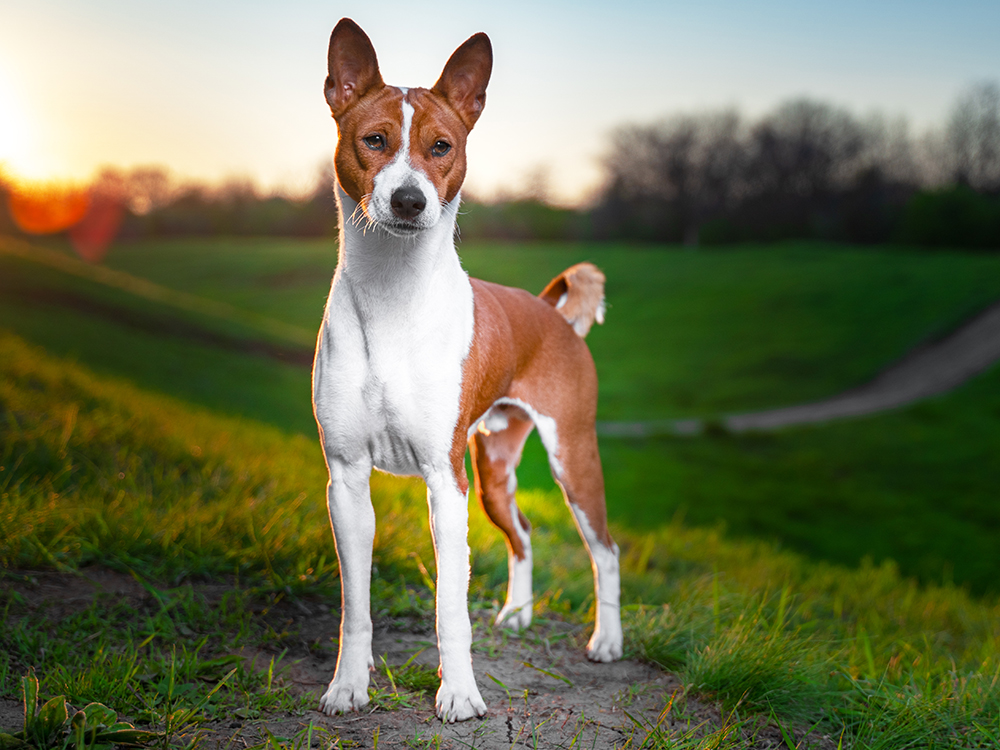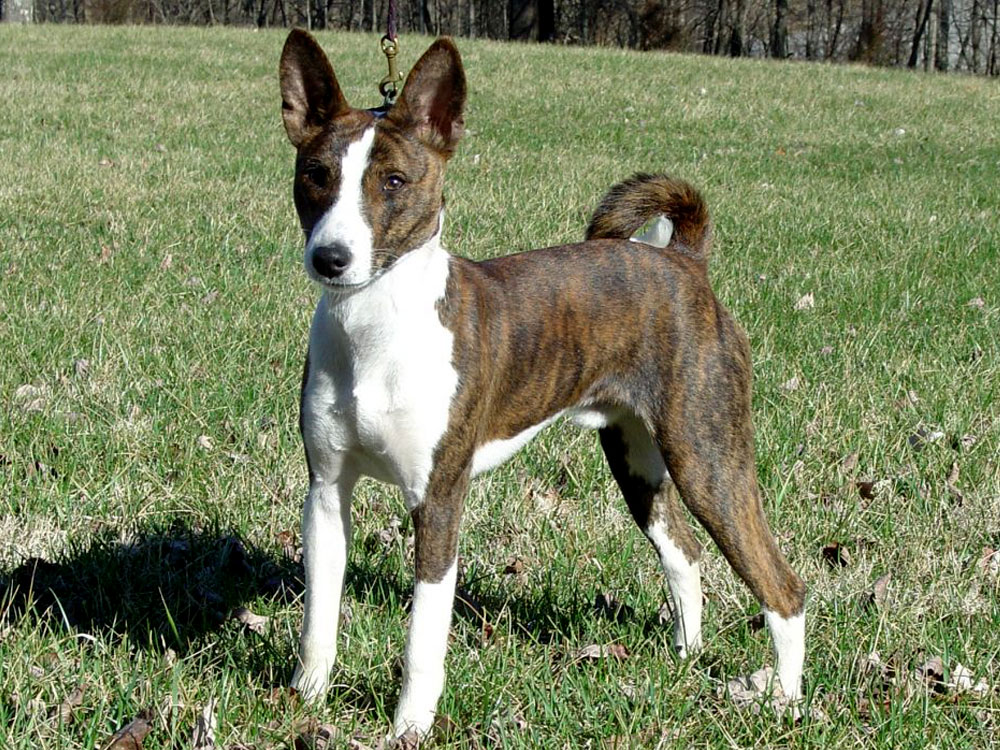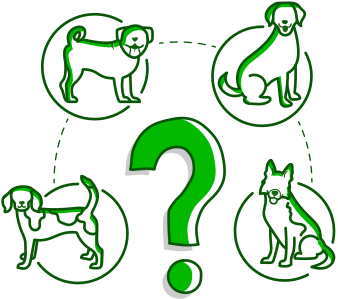
Basenji Breed Pictures
Vital Breed Stats
| Height: | 48 - 53 cm M | 48 - 53 cm F |
| Weight: | 10 - 12 kg M | 9 - 11 kg F |
| Breed Group: | Toy Dog Group |
| Life Expectancy: | 10 - 13 years |
| KC Registered: | No |
Breed Characteristics
| Size: |  |
| Grooming: |  |
| Exercise Level: |  |
| Trainability: |  |
| Barking Level: |  |
| Good with Children: |  |
| Good with other pets: |  |
| Affectionate: |  |
| Protective: |  |
| Cost to Keep: |  |
Give a thumbs up if you love the Basenji

0
More About the Breed
History
The Basenji is believed to have originated from Africa, specifically in the Congo. However, experts say that basenji-looking dogs who lived with humans were around thousands of years prior. In fact, the breed is likened to the ancient hunting dogs in Egypt called the Tesem. Europeans first identified the breed in 1895, cherished by Congolese locals for its speed, courage, intelligence, and silence.
The breed was successfully brought to England in the 1930s thanks to the animal importer Henry Trefflich. The breed was later registered with the Kennel Club in 1937. Previous attempts were unsuccessful because the first imports died of diseases like distemper.
Appearance
Grooming
This small yet powerful hunting dog has easy-to-maintain short hair. He has catlike grooming habits and is very clean. His virtually spotless coat requires minimal bathing, which can be done every few months. He sheds all-year round, but it is unnoticeable because the hair is fine and short.
Make sure to brush your basenji’s teeth twice or thrice a week. Brushing will help prevent tartar build-up and remove any bacteria lurking inside. Nails must be regularly trimmed especially if you start hearing clicks on the floor. The Basenji has an animated character, so he is most likely to jump on you to greet you, which makes short nails best to keep your legs from accidental scratches. Also, look out for sores, rashes, redness, lesions, or other signs of infection. If you find any abnormalities, make sure to have your Basenji dog checked with a veterinarian.
Temperament
The Basenji is affectionate and protective towards family members. However, he is not recommended in households with very young children. He thrives with older kids who know how to interact with him properly, especially those he grew up with. Since he has a strong hunting drive, he will chase and kill small animals.
This breed’s cute appearance, small stature, and fuss-free grooming requirements make him an attractive pet. However, his temperament, energy level, and personality can be challenging for the typical family. He can be a handful, so he is not for everybody.
Intelligence
Nutrition
- Senior and less active: up to 280 calories daily
- Typical adult: up to 370 calories daily
- Physically active/working dog: up to 460 calories daily
Feeding
Health
Exercise
Cost of Ownership
There is a rewarding feeling accompanied by owning a dog. But this feeling might not translate well if one is not prepared financially. Before you start looking for a dog to buy from a reputable breeder, make sure you have already considered the financial setbacks.
Owning a Basenji is by no means a cheap one, although he is way less expensive than other dog breeds. A Basenji puppy can cost you anywhere from £350 to £500. A significant portion of expenses goes to feeding this dog breed, costing around £20–£30 a month. Whilst other things such as dog supplies, equipment, and toys can set you back £200, annual health check with the veterinarian can quickly cost you around £800 per year. As a rough estimation, raising a basenji will cost you £60–£90 a month.
Is a Basenji Right for You?
- The Basenji does not bark, but his whine, chortle, scream, and yodel are apt descriptions of the sounds he makes.
- The Basenji is a smart and independent thinker, which makes him challenging to house-train.
- Like any hound dog, the Basenji is an escape artist if given a chance, hence he must not be left alone.
- The Basenji is affectionate with family and friends, but quite aloof with strangers.
- He is well-suited to a small city apartment as long as he is given enough exercise.
















